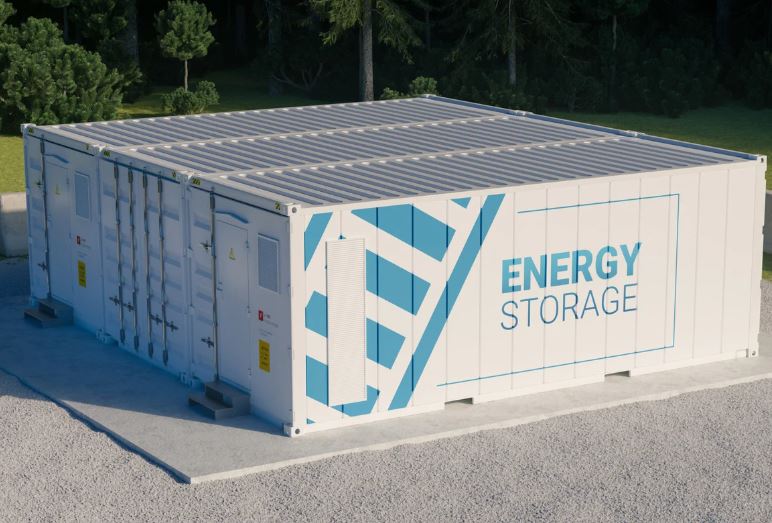India’s energy storage sector achieved a pivotal milestone in July 2024, with states tendering 8.1 GWh of capacity—the highest monthly volume on record—while discovering a benchmark tariff of ₹3.13 per unit for solar-plus-storage projects with four-hour duration. This represents an 18% reduction from the previous record low of ₹3.32 per unit, signaling rapid cost compression in a market that has launched tenders for 171GWh of energy storage capacity since 2018, including more than 55GWh in the first half of 2025 alone.
The acceleration reflects strategic alignment between state-level procurement and federal policy frameworks, particularly the expanded Viability Gap Funding (VGF) scheme that now supports up to 30 GWh of battery energy storage system (BESS) capacity through the Power System Development Fund. States are leveraging this window aggressively, with nearly one-third of the available capacity already tendered across multiple jurisdictions.
VGF Scheme Catalyzes Large-Scale Deployment
The Ministry of Power’s VGF framework provides crucial financial support covering up to 40% of BESS capital costs, fundamentally altering project economics for grid-scale storage. According to ministry documentation, 25GWh of capacity will be allocated to various states and 5GWh to NTPC, with NTPC integrating BESS with its existing thermal power fleet and transmission network. This strategic allocation enables both standalone storage deployment and hybrid thermal-battery configurations.
Recent auctions from Rajasthan, Gujarat, and Maharashtra demonstrate institutional appetite for large-scale projects, with individual bids reaching 2 GWh and 4 GWh capacities under the VGF umbrella. The scheme’s one-year application window has created procurement urgency among state utilities, driving competitive tendering dynamics that benefit from economies of scale and supplier competition.
Project sizing trends indicate market maturation beyond demonstration-scale deployments. SECI’s 1,000MW/2,000MWh standalone BESS tender represents India’s largest to date, while monthly tariff discoveries show consistent downward trajectory from ₹4.41 lakh/MW/month to ₹3.59 lakh/MW/month within six months for four-hour duration systems.
Market Structure and Competitive Dynamics
The tariff compression reflects several underlying market developments. Manufacturing scale-up, particularly in lithium-ion battery production, has reduced technology costs while competitive bidding processes have squeezed developer margins. The standardization around four-hour duration storage aligns with grid integration requirements for peak demand management and renewable energy firming applications.
India’s total BESS capacity reached 219.1 MWh as of March 2024, indicating a substantial growth trajectory from a relatively modest baseline. This installed capacity represents operational learning for both technology deployment and grid integration protocols, informing larger-scale procurement strategies.
The sector’s rapid expansion faces infrastructure and regulatory constraints. In 2024 alone, there have been 8 standalone BESS tenders issued totaling 6.3 GWh, accounting for 76% of total standalone BESS capacity tenders issued. This concentration reflects both policy support effectiveness and potential bottlenecks in project execution capabilities.
Grid Integration and Technical Requirements
Energy storage deployment serves multiple grid stability functions beyond simple peak shaving. Round-the-clock renewable energy procurement requirements drive demand for storage systems that can provide consistent output profiles from variable solar and wind resources. Evening peak demand management represents a critical application as solar generation declines while electricity consumption increases across residential and commercial sectors.
State utilities are increasingly incorporating storage requirements into renewable purchase obligations, creating regulatory demand that complements commercial incentives. The technical specifications typically emphasize four-hour duration systems, balancing cost-effectiveness with operational flexibility for daily cycling applications.
Central Electricity Authority has approved 6 hydro-pumped storage projects totaling about 7.5 GW during 2024-25, with plans for a minimum of 13 PSPs totaling about 22 GW during 2025-26. This parallel development of long-duration storage through pumped hydro creates a complementary technology mix addressing different grid services requirements.
Financial Structure and Investment Trends
The VGF scheme’s 40% capital cost support fundamentally alters project financing by reducing developer equity requirements and improving debt serviceability ratios. This financial engineering enables larger project scales while maintaining acceptable returns for private developers and equipment suppliers.
Tariff discovery mechanisms have evolved beyond simple lowest-cost selection to incorporate technical specifications, financial capability assessments, and execution track records. The ₹3.13 per unit benchmark represents delivered energy costs that compete favorably with conventional peaking power alternatives while providing additional grid services value.
The rapid tendering pace reflects confidence in technology maturity and supply chain capabilities. The Ministry of Power announced the second tranche of VGF with ₹1.8 million support per MWh, indicating sustained policy commitment beyond initial program phases.
Market Evolution and Scaling Trajectories
India’s energy storage market demonstrates characteristics of rapid technology adoption driven by policy support and cost reduction trends. The monthly record of 8.1 GWh tendered capacity represents institutional learning and procurement efficiency gains that enable larger transaction sizes and more competitive supplier participation.
The sector’s trajectory suggests a transition from policy-supported deployment toward commercial viability as costs continue declining and grid services values become better quantified. The four-hour duration standard reflects optimization between capital costs and operational requirements, though future specifications may evolve toward longer durations as renewable penetration increases.
Competitive dynamics favor integrated developers capable of managing complex project development, financing, and long-term operational requirements. The tariff compression indicates market maturation where pure technology cost advantages diminish relative to execution capabilities and financial engineering expertise.
The record monthly tendering volume establishes India among global leaders in grid-scale storage procurement, with implications for domestic manufacturing development and export market positioning. The ₹3.13 per unit tariff discovery provides a benchmark for international cost competitiveness while demonstrating the effectiveness of structured policy support in accelerating market development.
